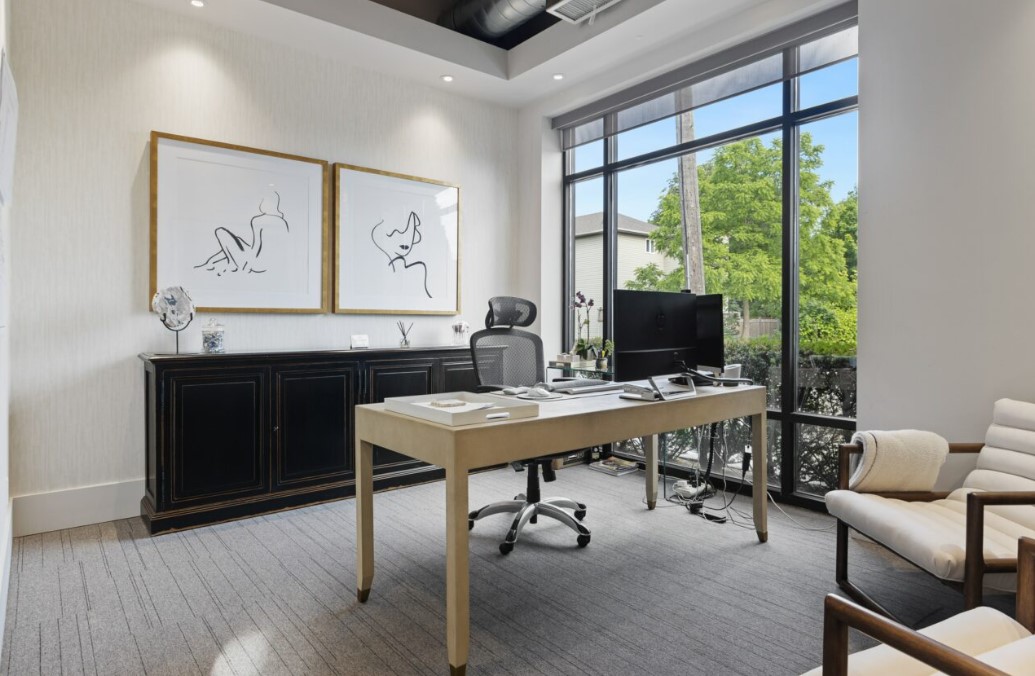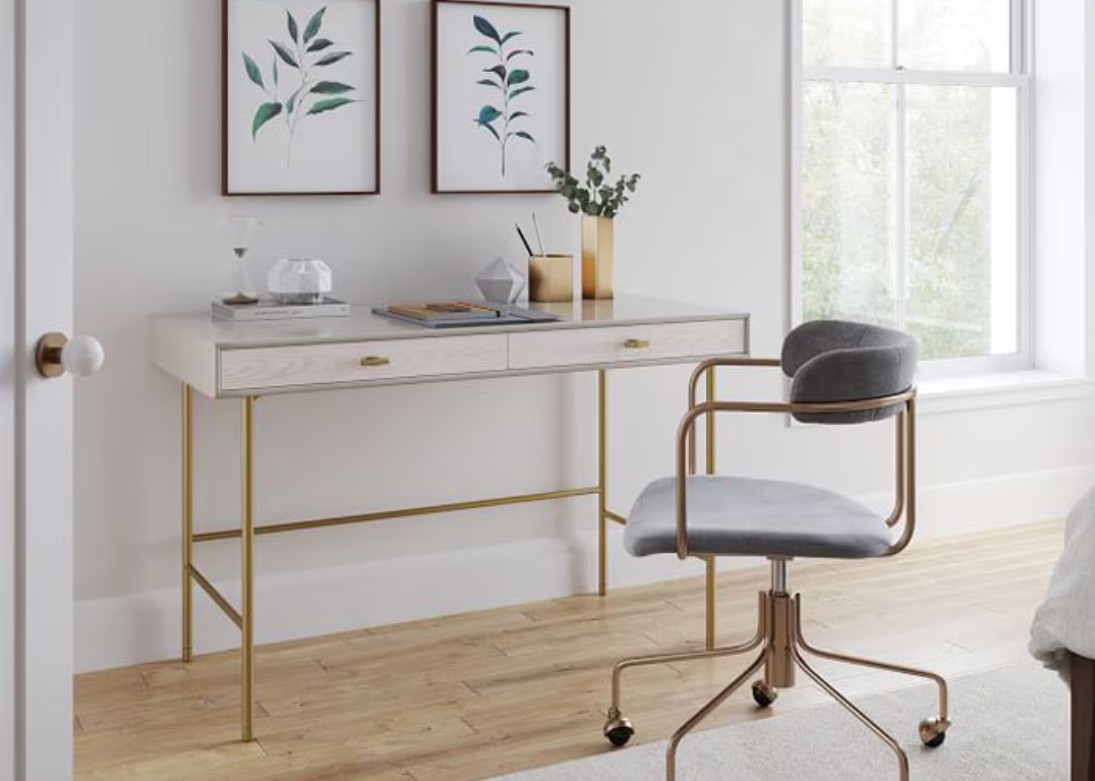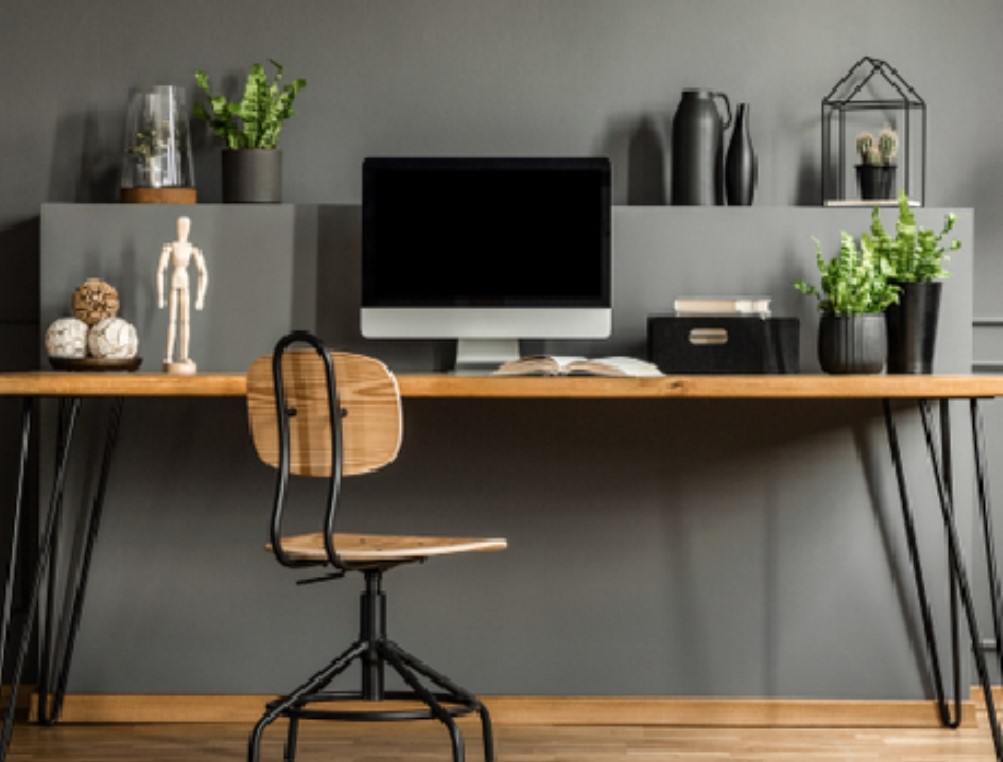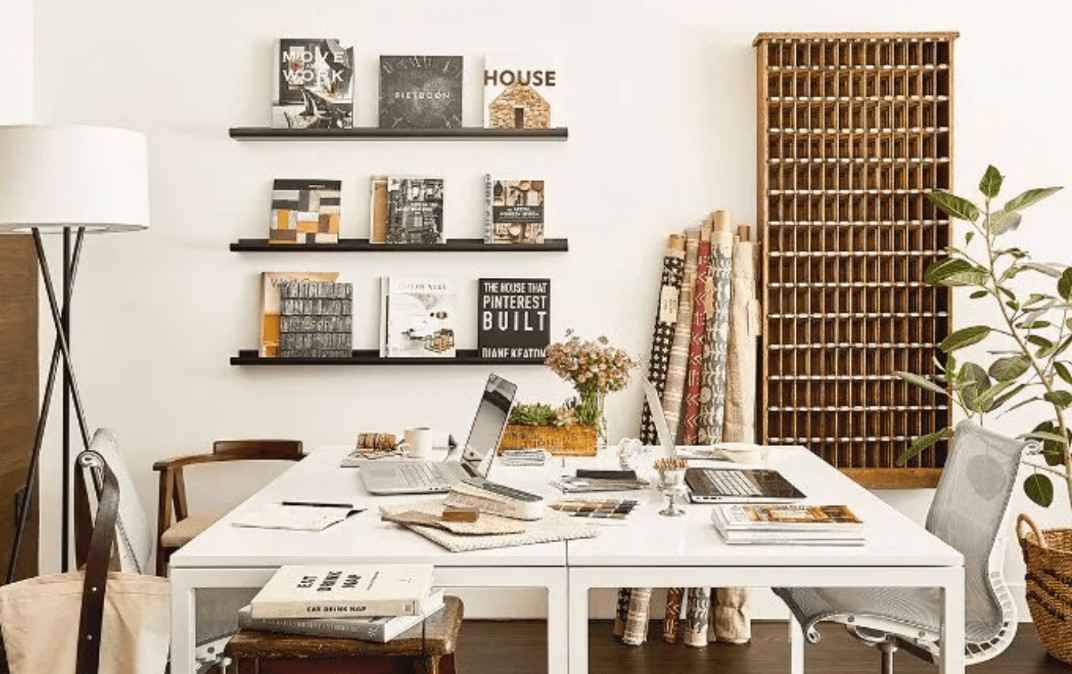Office decor plays a pivotal role in shaping the environment where we spend a significant portion of our day. A well-designed office not only enhances aesthetics but also boosts productivity, creativity, and overall well-being. In this comprehensive guide, we’ll explore various aspects of office decor, from historical influences and key principles to practical tips and future trends. Whether you’re setting up a home office or revamping a corporate workspace, this article provides valuable insights to help you create a space that’s both functional and inspiring.
Importance of Office Decor

Office decor is not merely an aesthetic concern; it plays a fundamental role in shaping the overall work environment. The design and layout of an office can significantly impact employee well-being, productivity, and even the company’s brand image. Here’s why office decor is so important:
Enhances Employee Morale and Job Satisfaction
A well-designed office can boost employee morale and job satisfaction. When employees work in a space that is visually appealing and comfortable, they are more likely to feel valued and appreciated. This positive environment can lead to higher levels of engagement and motivation.
Boosts Productivity
The layout and design of an office can have a direct impact on productivity. Ergonomic furniture, appropriate lighting, and a clutter-free environment can help employees focus better and work more efficiently. Studies have shown that employees in well-designed offices are more productive than those in poorly designed spaces.
Promotes Health and Well-being
Office decor that prioritizes ergonomics and comfort can reduce the risk of work-related injuries and health issues. Ergonomic chairs and desks, proper lighting, and good ventilation are essential elements that contribute to the physical well-being of employees. Additionally, incorporating elements like plants and natural light can enhance mental well-being by reducing stress and boosting mood.
Facilitates Collaboration and Communication

Open-plan offices and thoughtfully designed collaborative spaces can encourage communication and teamwork among employees. By providing areas for both focused work and group interactions, office decor can support various work styles and enhance overall team performance.
Reflects Company Culture and Brand
The design of an office is a reflection of the company’s culture and values. A modern, innovative workspace can convey a message of creativity and forward-thinking, while a traditional, elegant office may reflect professionalism and stability. Consistent office decor helps reinforce the company’s brand identity to both employees and visitors.
Attracts and Retains Talent
A visually appealing and functional office can be a significant factor in attracting and retaining top talent. Prospective employees often consider the work environment when deciding to join a company. A well-decorated office can give your business a competitive edge in the job market.
Supports Organizational Efficiency
A well-organized office layout can improve operational efficiency. Effective use of space, strategic placement of workstations, and ample storage solutions can streamline workflows and reduce time wasted on locating resources or navigating through a cluttered space.
Encourages Creativity and Innovation
Creative and stimulating office decor can inspire employees and foster innovation. Elements like vibrant colors, unique artwork, and flexible workspaces can encourage out-of-the-box thinking and creativity.
Adapts to Changing Needs
Modern office decor should be flexible to adapt to the changing needs of the workplace. Modular furniture, movable partitions, and multi-functional spaces can easily be reconfigured to accommodate new technologies, changing team sizes, and evolving work styles.
Improves Client Perception
An attractive and well-maintained office can leave a positive impression on clients and business partners. A professional and aesthetically pleasing environment demonstrates attention to detail and commitment to quality, which can enhance the company’s reputation and credibility.
In summary, the importance of office decor extends beyond mere aesthetics. It is a critical component that influences employee well-being, productivity, company culture, and overall business success. Investing in thoughtful office decor can yield significant returns in terms of employee satisfaction, operational efficiency, and brand perception.
Types of Office Decor Styles

In the evolving landscape of office environments, the choice of decor plays a crucial role in influencing the productivity, creativity, and overall well-being of employees. A thoughtfully designed office not only enhances aesthetic appeal but also reflects the company’s culture and values. Here, we explore various office decor styles, each with its unique characteristics and advantages.
1. Modern Office Decor
Modern office decor is characterized by sleek lines, minimalistic design, and a neutral color palette. It emphasizes functionality and simplicity, creating a clutter-free environment that promotes focus and efficiency. Key elements of modern office decor include:
- Neutral Colors: Whites, grays, and blacks dominate, providing a clean and professional look.
- Open Spaces: An open-plan layout encourages collaboration and communication among employees.
- Minimalist Furniture: Furniture with simple designs, often made from materials like metal and glass, enhances the modern aesthetic.
- Natural Light: Large windows and open spaces allow for ample natural light, reducing the need for artificial lighting and creating a more inviting atmosphere.
- Tech Integration: Modern offices often feature advanced technological integrations, including smartboards, ergonomic workstations, and state-of-the-art conferencing tools.
2. Industrial Office Decor
The industrial style is inspired by old factories and industrial spaces, giving a rugged and raw look to the office. This style is popular for its blend of modern and rustic elements. Characteristics include:
- Exposed Structures: Elements such as brick walls, exposed ductwork, and metal beams are left uncovered to highlight the building’s structure.
- Raw Materials: The use of materials like reclaimed wood, metal, and concrete adds to the industrial feel.
- Neutral Tones: Earthy and neutral tones such as browns, grays, and blacks dominate the color palette.
- Functional Furniture: Furniture is often vintage or reclaimed, combining practicality with aesthetic appeal.
- Open Layouts: Open floor plans with high ceilings contribute to a spacious and airy environment.
3. Contemporary Office Decor
Contemporary office decor is ever-evolving, reflecting current trends and innovations in design. It borrows elements from various styles and combines them in a fresh and dynamic way. Features include:
- Bold Colors: Unlike the muted tones of modern decor, contemporary offices often incorporate bold, vibrant colors to create a lively atmosphere.
- Eclectic Mix: A blend of different materials, patterns, and textures adds depth and interest.
- Flexible Spaces: Furniture and layouts are designed to be adaptable, accommodating various activities and work styles.
- Greenery: Plants and green walls are commonly used to bring a touch of nature indoors, enhancing air quality and reducing stress.
- Art and Decor: Statement pieces of art and unique decor items are used to personalize the space and reflect the company’s identity.
4. Traditional Office Decor
Traditional office decor exudes elegance and sophistication, often featuring classic design elements that have stood the test of time. This style is ideal for businesses that want to convey stability and reliability. Key aspects include:
- Rich Woods: Dark, polished woods such as mahogany and cherry are commonly used for furniture and paneling.
- Classic Furniture: Ornate desks, leather chairs, and intricate woodwork are hallmarks of traditional office decor.
- Warm Colors: A warm color palette of deep reds, greens, and golds creates a cozy and inviting atmosphere.
- Decorative Accents: Items like Persian rugs, framed artwork, and decorative moldings add a touch of luxury.
- Private Offices: Traditional decor often favors individual offices over open-plan layouts, providing privacy and quiet workspaces.
5. Scandinavian Office Decor
Scandinavian office decor is known for its simplicity, functionality, and connection to nature. It creates a serene and uncluttered environment, promoting well-being and productivity. Characteristics include:
- Light Colors: Whites and light grays dominate, creating a bright and airy atmosphere.
- Natural Materials: Wood, especially light-toned varieties like pine and birch, is extensively used in furniture and flooring.
- Minimalism: Clean lines and a lack of clutter are key features, with an emphasis on functionality and simplicity.
- Textiles: Soft textiles like wool and linen add warmth and comfort to the space.
- Green Elements: Plants and natural light are integral, reflecting the Scandinavian love for nature and the outdoors.
6. Bohemian Office Decor
Bohemian, or boho, office decor is eclectic, vibrant, and full of personality. It’s perfect for creative environments where individuality and free expression are encouraged. Key elements include:
- Colorful Patterns: Bold patterns and vibrant colors, often in rich jewel tones, are used throughout the space.
- Mix of Textures: A variety of textures, such as woven rugs, macrame, and rattan furniture, add depth and interest.
- Vintage Finds: Unique vintage furniture and decor items give the space a personalized and eclectic feel.
- Art and Decor: An abundance of art, plants, and personal items create a warm and inviting atmosphere.
- Casual Layouts: Flexible and relaxed seating arrangements, such as lounge areas with cushions and poufs, foster creativity and collaboration.
7. Minimalist Office Decor
Minimalist office decor focuses on simplicity and functionality, eliminating unnecessary elements to create a calm and focused environment. Features include:
- Neutral Palette: Whites, grays, and blacks create a clean and uncluttered look.
- Simple Furniture: Furniture designs are straightforward, with clean lines and a lack of ornate details.
- Clutter-Free: Spaces are kept free of clutter, with ample storage solutions to keep things organized.
- Natural Light: Maximizing natural light helps to create a bright and open environment.
- Quality Over Quantity: The focus is on a few high-quality items rather than an abundance of decor.
8. Rustic Office Decor
Rustic office decor brings the charm of the countryside to the workplace, with natural materials and a warm, inviting atmosphere. Key features include:
- Natural Materials: Wood, stone, and metal are prominently used, often in their natural, unfinished state.
- Warm Colors: Earthy tones such as browns, greens, and tans create a cozy and welcoming environment.
- Handcrafted Items: Furniture and decor often include handcrafted items, adding a personal touch.
- Comfortable Furniture: Soft seating and warm textiles make the space feel comfortable and inviting.
- Natural Light: Large windows and open spaces allow for plenty of natural light, enhancing the connection to nature.
9. Coastal Office Decor
Coastal office decor is inspired by the beach and ocean, creating a relaxed and breezy atmosphere. This style is perfect for offices in coastal locations or businesses that want to evoke a sense of calm and tranquility. Key elements include:
- Light and Airy Colors: Whites, blues, and sandy neutrals dominate the color palette.
- Natural Materials: Wicker, rattan, and light woods are commonly used in furniture and decor.
- Nautical Accents: Items such as seashells, ropes, and marine-themed artwork add to the coastal vibe.
- Open Spaces: Open floor plans and large windows help to create a light and airy feel.
- Relaxed Furniture: Comfortable and casual furniture pieces, such as slipcovered sofas and lounge chairs, enhance the laid-back atmosphere.
In conclusion, choosing the right office decor style is essential for creating an environment that reflects your company’s values, enhances productivity, and promotes employee well-being. Each style offers unique characteristics and benefits, allowing businesses to create a space that best suits their needs and culture.
Resources for Learning More About Office Decor

Creating an inspiring office environment is essential for productivity and well-being. Here are some top resources to help you elevate your office decor game.
- Online Retailers Offering Office Decor
The internet is a treasure trove of office decor ideas and products. Websites like Wayfair, Overstock, and Amazon provide a vast selection of furniture, accessories, and decor items. They offer user reviews and detailed product descriptions to help you make informed decisions. - Interior Design Blogs and Websites
Blogs and websites dedicated to interior design are excellent for finding inspiration and advice. Sites like Apartment Therapy, Houzz, and Decor8 offer tips, trends, and DIY projects tailored for office spaces. They feature expert opinions and real-life examples to guide your decor choices. - Social Media Platforms for Decor Inspiration
Platforms like Pinterest and Instagram are visual goldmines for office decor ideas. Follow hashtags like #OfficeDecor, #WorkspaceGoals, and #HomeOffice to discover creative setups. Influencers and interior designers regularly share their stylish spaces, providing endless inspiration. - Books on Office Interior Design
Books offer in-depth knowledge and timeless advice. Titles like “The Inspired Workspace” by Anna Yudina and “Workspaces and Workplaces” by Jeremy Myerson provide comprehensive insights into creating functional and aesthetically pleasing office environments. - YouTube Channels and Tutorials
YouTube is a fantastic resource for visual learners. Channels like Mr. Kate, House & Home, and The Sorry Girls offer step-by-step tutorials on decorating your office. They cover everything from furniture arrangement to DIY decor projects. - Professional Interior Designers
Hiring a professional can make a significant difference. Interior designers bring expertise and a fresh perspective to your space. Websites like Thumbtack and Houzz allow you to find and hire local designers who specialize in office decor. - Office Supply Stores
Don’t overlook traditional office supply stores like Staples and Office Depot. These stores offer practical solutions and often carry stylish decor items. They also provide organization tools that can enhance the functionality of your workspace. - DIY Resources for Personalized Touches
For those who love crafting, DIY projects can add a unique touch to your office. Websites like DIY Network and Instructables offer countless ideas and tutorials for creating custom decor pieces. Personal touches make your office feel more inviting and reflective of your style.
